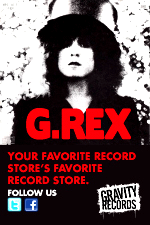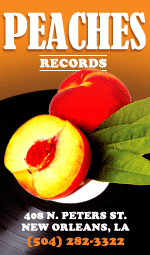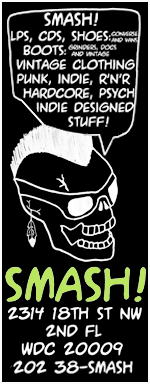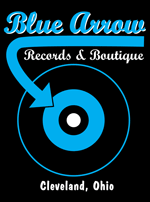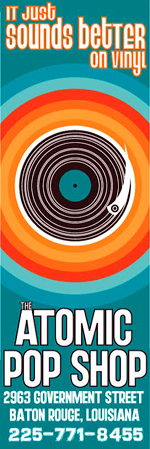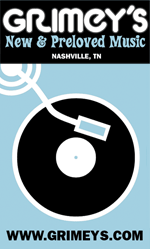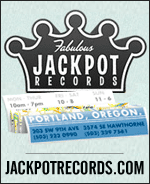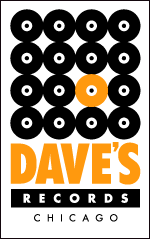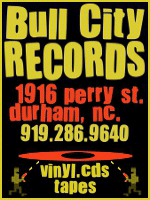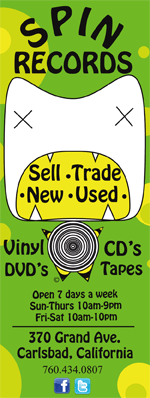
Remembering Muddy Waters, born on this day in 1913. —Ed.
Where to start with the music of that sly titan of 20th century music Muddy Waters? Some will advise an inquisitive newbie to invest in an exhaustive multi-disc box set that retails in the neighborhood of a Franklin, while a closet Johnny Winter-aficionado might recommend one of his late-‘70s LPs for the Blue Sky label (and that’s definitely not the place to begin.) However, the most sensible way to commence a journey into the everlasting goodness of McKinley Morganfield is to simply follow the path many thousands have already made, and it leads directly to the doorstep of 1958’s extraordinarily enlightening The Best of Muddy Waters.
 While a certifiable embarrassment of great LPs have been made since the format was first introduced in 1948, they don’t all command the same level of historical respect, even from individuals that happen to hold a deep relationship to the sounds those less revered records contain. For instance, after giving the realms of heavy-duty music connoisseurship a good inspection, there is no doubt that the Best of/Greatest Hits LP continues to shoulder something of a bad reputation, with its appeal often denigrated as being directed mostly to dabblers.
While a certifiable embarrassment of great LPs have been made since the format was first introduced in 1948, they don’t all command the same level of historical respect, even from individuals that happen to hold a deep relationship to the sounds those less revered records contain. For instance, after giving the realms of heavy-duty music connoisseurship a good inspection, there is no doubt that the Best of/Greatest Hits LP continues to shoulder something of a bad reputation, with its appeal often denigrated as being directed mostly to dabblers.
These records, awarded to artists who had managed to secure a handful of creative and/or commercial highpoints either in one fast spurt or in some period of sustained longevity, are reliably frowned upon by more intense listeners as essentially being easy primers designed by cash hungry record labels with the intention of giving more casual ears a quick fix and some level of conversance (a sort of career Cliff Notes, if you will) to discographies of considerable distinction.
That’s not necessarily an incorrect assessment. But there are other elements in the scenario, as anyone who ever got turned on to Donovan through their parent’s well-worn copy of his wildly popular Greatest Hits LP can surely understand. And when handed down by older siblings as they slouched off to spend four years in a cramped college dorm, the Best of/Greatest Hits album has surely functioned as a gateway into substantial musical discoveries of all types.





 Let’s get it out of the way right up front; nobody in the Tijuana Brass was from Mexico. They were in fact a purely studio concoction at the outset with Alpert overdubbing his trumpet for increased vibrancy. Naturally, these realities have led many to rashly assume the (largely) instrumental venture effectively putting A&M Records (stands for Alpert and Moss, as in executive Jerry Moss) on the map was an exercise in total squaresville.
Let’s get it out of the way right up front; nobody in the Tijuana Brass was from Mexico. They were in fact a purely studio concoction at the outset with Alpert overdubbing his trumpet for increased vibrancy. Naturally, these realities have led many to rashly assume the (largely) instrumental venture effectively putting A&M Records (stands for Alpert and Moss, as in executive Jerry Moss) on the map was an exercise in total squaresville.
 I’m unsure if there’s ever been any real consensus over which of The Turtles’ string of original, non-comp albums is their greatest. Indeed, the group doesn’t really get discussed all that often in LP terms, at least in my experience. Instead, they seem to remain in the cultural discourse mainly as an exponent of the mid-‘60s folk-rock boom, one that was able to break free of the substantial Dylan-isms of their early work to score a handful of pop hits that successfully straddled the fence betwixt the youth market and the era’s more “adult” record-buying audience.
I’m unsure if there’s ever been any real consensus over which of The Turtles’ string of original, non-comp albums is their greatest. Indeed, the group doesn’t really get discussed all that often in LP terms, at least in my experience. Instead, they seem to remain in the cultural discourse mainly as an exponent of the mid-‘60s folk-rock boom, one that was able to break free of the substantial Dylan-isms of their early work to score a handful of pop hits that successfully straddled the fence betwixt the youth market and the era’s more “adult” record-buying audience.




 Regarding Jon Hassell’s early catalog, 1980’s Fourth World Vol. 1: Possible Musics is much better known, even before it was reissued by Glitterbeat in 2014, largely because it has Brain Eno’s name on the cover. Eno plays on and mixed Vol. Two as well, but co-billing eludes him, specifically due to Hassell’s distress over his partner running with the Fourth World musical ball and spiking it directly into David Byrne’s backyard.
Regarding Jon Hassell’s early catalog, 1980’s Fourth World Vol. 1: Possible Musics is much better known, even before it was reissued by Glitterbeat in 2014, largely because it has Brain Eno’s name on the cover. Eno plays on and mixed Vol. Two as well, but co-billing eludes him, specifically due to Hassell’s distress over his partner running with the Fourth World musical ball and spiking it directly into David Byrne’s backyard.

 The Zombies began cohering as a band around 1961-’62 in St Albans, Hertfordshire UK. By the time they debuted on record in ’64 the lineup had solidified, featuring lead vocalist-guitarist Colin Blunstone, keyboardist Rod Argent, guitarist Paul Atkinson, bassist Chris White, and drummer Hugh Grundy. That’s how it would remain until their breakup in December of ’67. Rightly considered part of the mid-’60s British Invasion, The Zombies’ stature in the context of this explosion basically rests on the success of two singles, both far more popular in the US than in the band’s home country.
The Zombies began cohering as a band around 1961-’62 in St Albans, Hertfordshire UK. By the time they debuted on record in ’64 the lineup had solidified, featuring lead vocalist-guitarist Colin Blunstone, keyboardist Rod Argent, guitarist Paul Atkinson, bassist Chris White, and drummer Hugh Grundy. That’s how it would remain until their breakup in December of ’67. Rightly considered part of the mid-’60s British Invasion, The Zombies’ stature in the context of this explosion basically rests on the success of two singles, both far more popular in the US than in the band’s home country.

 Back in 1991, Mosaic Records issued The Complete Capitol Recordings of the Nat King Cole Trio, an exhaustive limited-edition set spread across 18 compact discs or 27 vinyl records. It was obviously produced for hardcore jazz nut collectors, the kind of listener who would know that Cole had worked extensively as a musician prior to his career-defining move to Capitol (an association he would maintain throughout his superstardom until the end of his life) but with very few commercial records detailing said period.
Back in 1991, Mosaic Records issued The Complete Capitol Recordings of the Nat King Cole Trio, an exhaustive limited-edition set spread across 18 compact discs or 27 vinyl records. It was obviously produced for hardcore jazz nut collectors, the kind of listener who would know that Cole had worked extensively as a musician prior to his career-defining move to Capitol (an association he would maintain throughout his superstardom until the end of his life) but with very few commercial records detailing said period.













